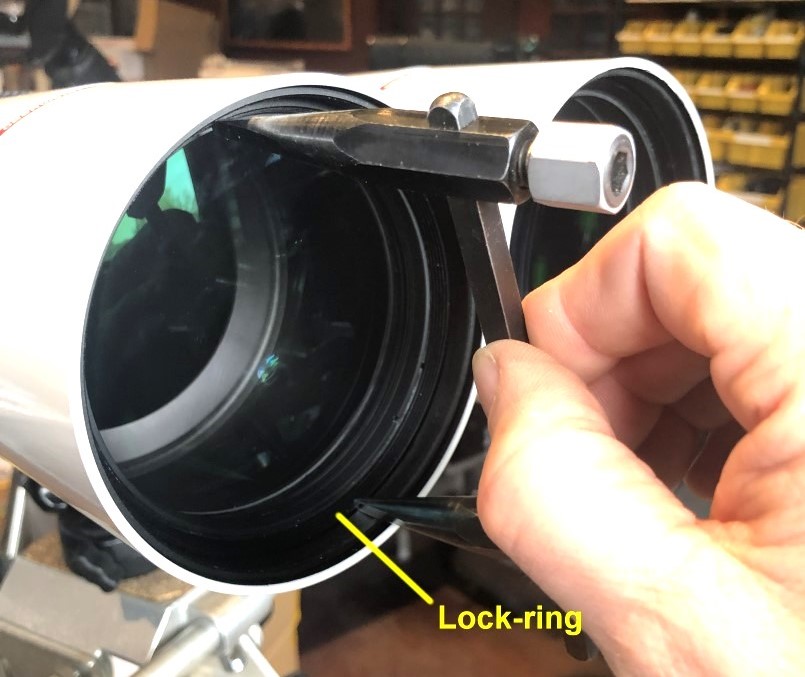Collimation Instructions for the XL Series
The XL Series binocular telescopes are unique in many ways. But one of the most important is that their prisms are locked down tight during assembly, with no provision for adjustment. The only adjustment available is through rotation of eccentric objective cells. This is a great feature for a few reasons-
1) With prisms and objectives locked in place, it’s highly unlikely that alignment could change during shipping or transport.
2) Parallelism will not change when rotating eccentric objective cells- in other words, any adjustment made will not cause “conditional alignment”.
3) The rotation of objective cells is very easy to do, and only requires an optical spanner wrench with a diameter that matches or exceeds your binocular’s objective diameter.
Your XL Series binocular was collimated at Oberwerk prior to shipping to you. It’s unlikely to ever need adjustment, but should you want to do so, the process is very simple. You should also be aware of possible eyepiece eccentricity- where images can move with the rotation of the eyepiece in the focuser. To test this, loosen the eyepiece lock-rings a half turn. Rotate each eyepiece within the focuser and note if the view on that side shifts with the rotation of the eyepiece. It’s normal to see a little movement. When randomly inserting eyepieces, you may end up with one eyepiece shifting the view in one direction, and the other eyepiece shifting the view in the opposite direction, resulting in a noticeable, but easily correctable, misalignment. So before making any adjustments, be certain any misalignment detected is not being caused by eyepiece eccentricty.
To start, make sure the binocular is level, facing a very distant target that can be used to determine alignment. Using an optical spanner wrench, loosen the outer-most lock-ring on both sides. Be careful that the spanner wrench does not slip from the notches in the lock-ring as they could scratch the lens surface.
Determine which way the images need to move, then use fingertips from both hands against the outermost ring of the objective cell (which is directly behind the lock ring) to rotate the cell in small increments, to see which cell and which direction improves (or worsens) any misalignment. It may require rotation from just one cell, or both, to produce the desired correction. Another good thing about this alignment process is the adjustment range is limited, so it’s impossible to really mess things up, no matter what you do.
Once alignment is as perfect as possible, tighten the lock-rings firmly- but not too tight as we only want to prevent inadvertent cell rotation.
If you have any questions, please contact Oberwerk technical support by phone or email at [email protected].

